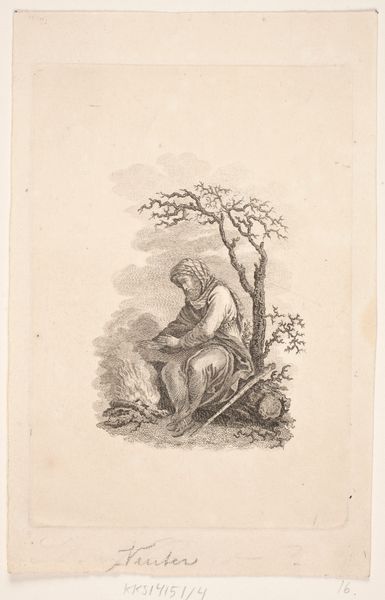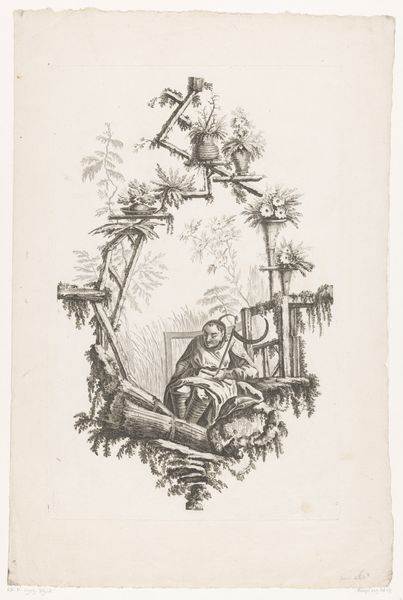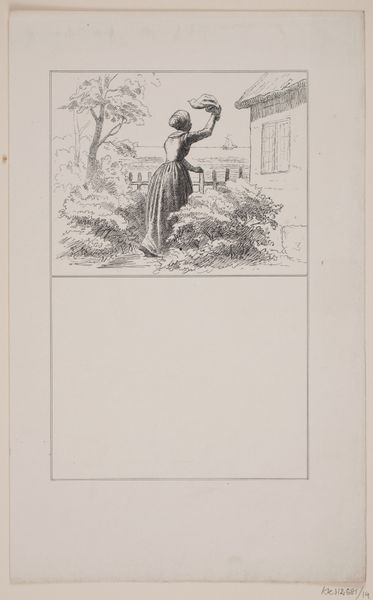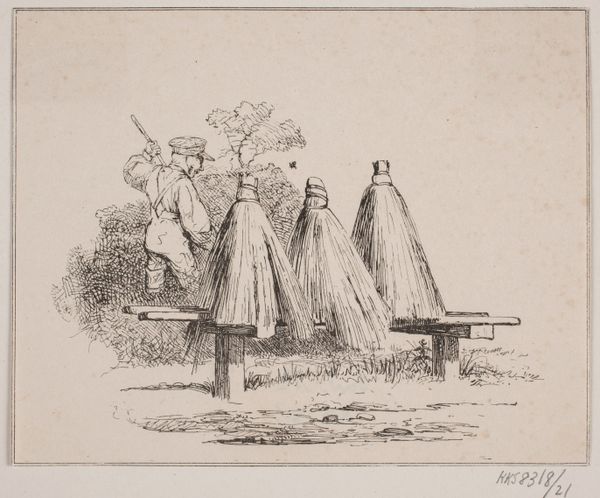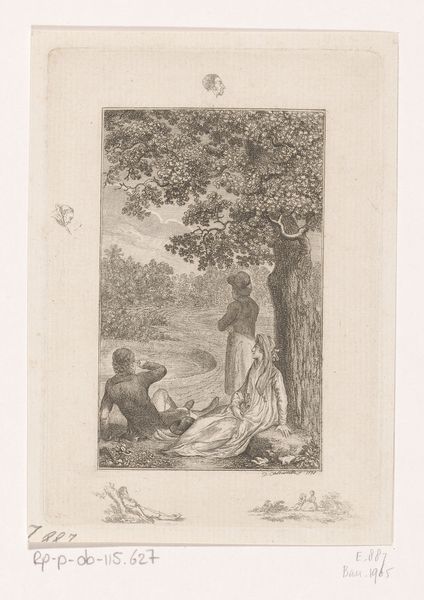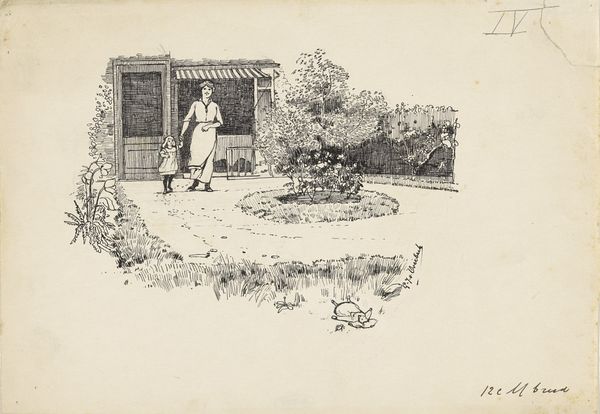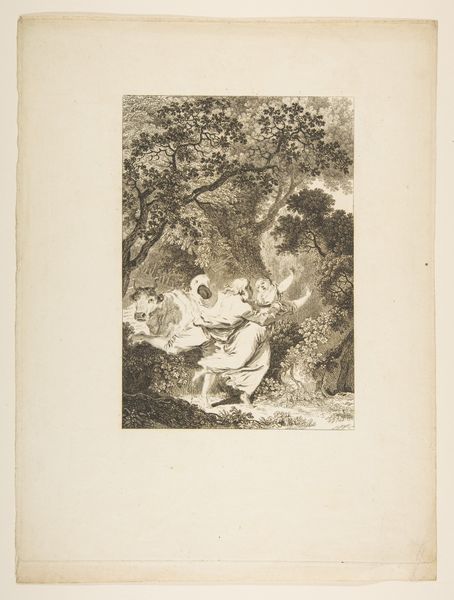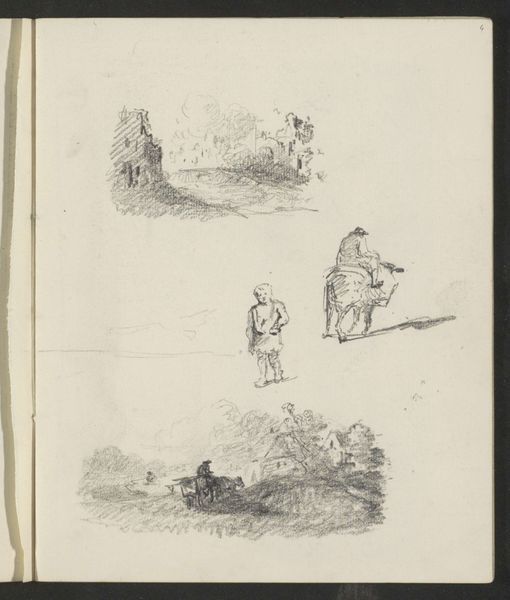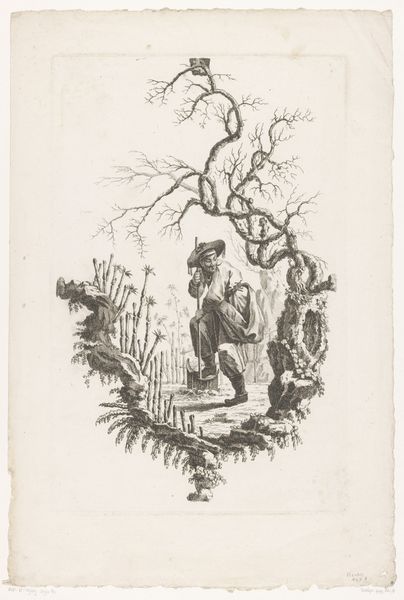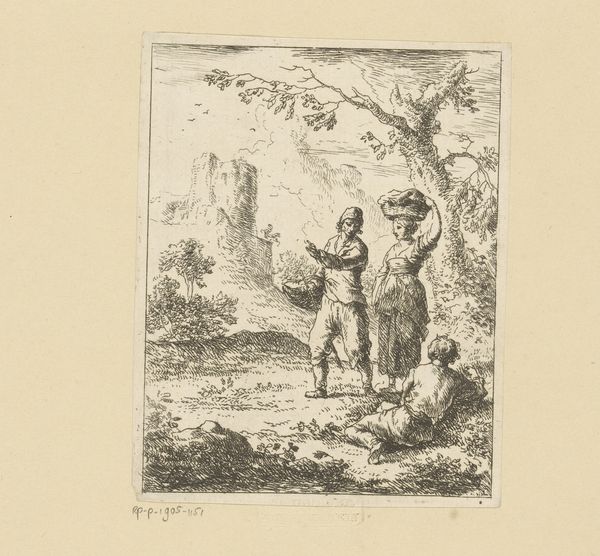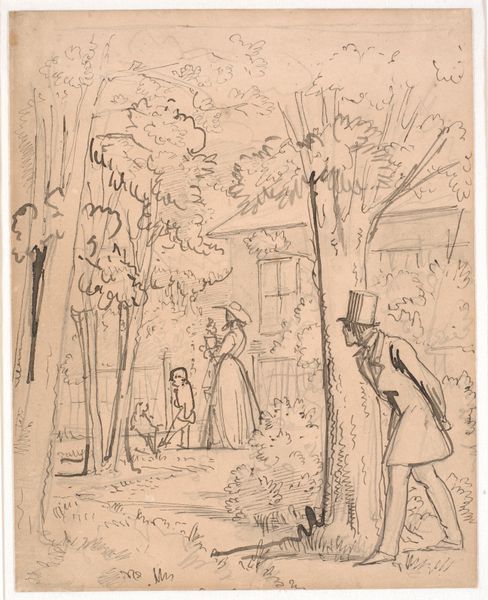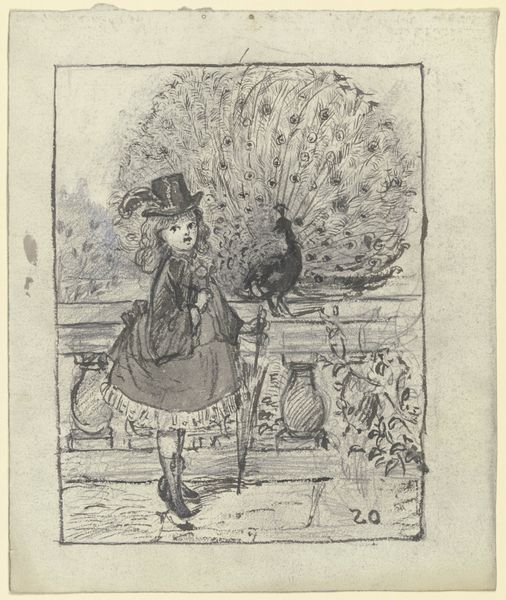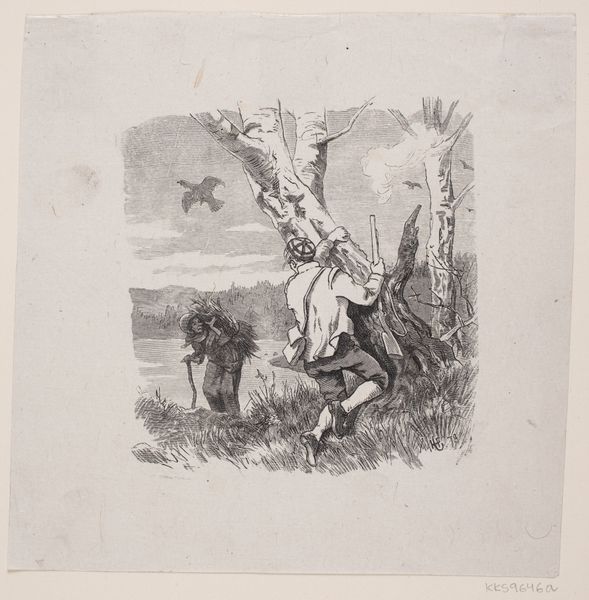
drawing, ink, pen
#
landscape illustration sketch
#
drawing
#
quirky illustration
#
quirky sketch
#
pen illustration
#
pen sketch
#
landscape
#
personal sketchbook
#
ink
#
ink drawing experimentation
#
folk-art
#
pen-ink sketch
#
naïve-art
#
sketchbook drawing
#
pen
#
genre-painting
#
sketchbook art
Dimensions: height 317 mm, width 386 mm
Copyright: Rijks Museum: Open Domain
Editor: This is "Bellenblazend meisje en twee kabouters," or "Girl Blowing Bubbles and Two Goblins" by Adrie Vürtheim, made sometime between 1917 and 1970 using pen and ink. It has such a whimsical feel, but something about the starkness of the lines creates a sense of unease. What do you see in this piece? Curator: From a formalist perspective, the immediate observation is the stark contrast of light and shadow created by the ink. Vürtheim has employed hatching and cross-hatching techniques to define form and volume, evident in the girl’s dress and the surrounding foliage. Consider the composition. The positioning of the girl on the left and the goblins on the right creates a visual dichotomy, doesn’t it? One is tempted to examine the negative space between these two groupings to understand their spatial relationship. Editor: Yes, they're almost like two separate scenes on the same plane! Do you think that division means something? Curator: Perhaps. Note the carefully considered distribution of visual weight. The darkness of the goblins and the bench anchors the composition, preventing it from feeling unbalanced despite the open space. Are you considering how the artist's deliberate use of line quality affects your interpretation? The crispness and uniformity lend the drawing an illustrative, graphic quality that underscores its narrative potential. Editor: I do see that. The uniformity creates almost a sense of flatness to the space despite the detail. Curator: Precisely. It's in this flattening that we recognize the artist’s self-conscious manipulation of the medium, focusing our attention on the inherent qualities of line and form rather than any illusionistic depth. What meaning, then, can you construct from that awareness? Editor: That's given me a completely different perspective. I was so caught up in the "story," but thinking about how the materials create the effect has been illuminating. Curator: Indeed. The artist's intention becomes less relevant than the observable reality of the artwork itself and its elemental language.
Comments
No comments
Be the first to comment and join the conversation on the ultimate creative platform.
